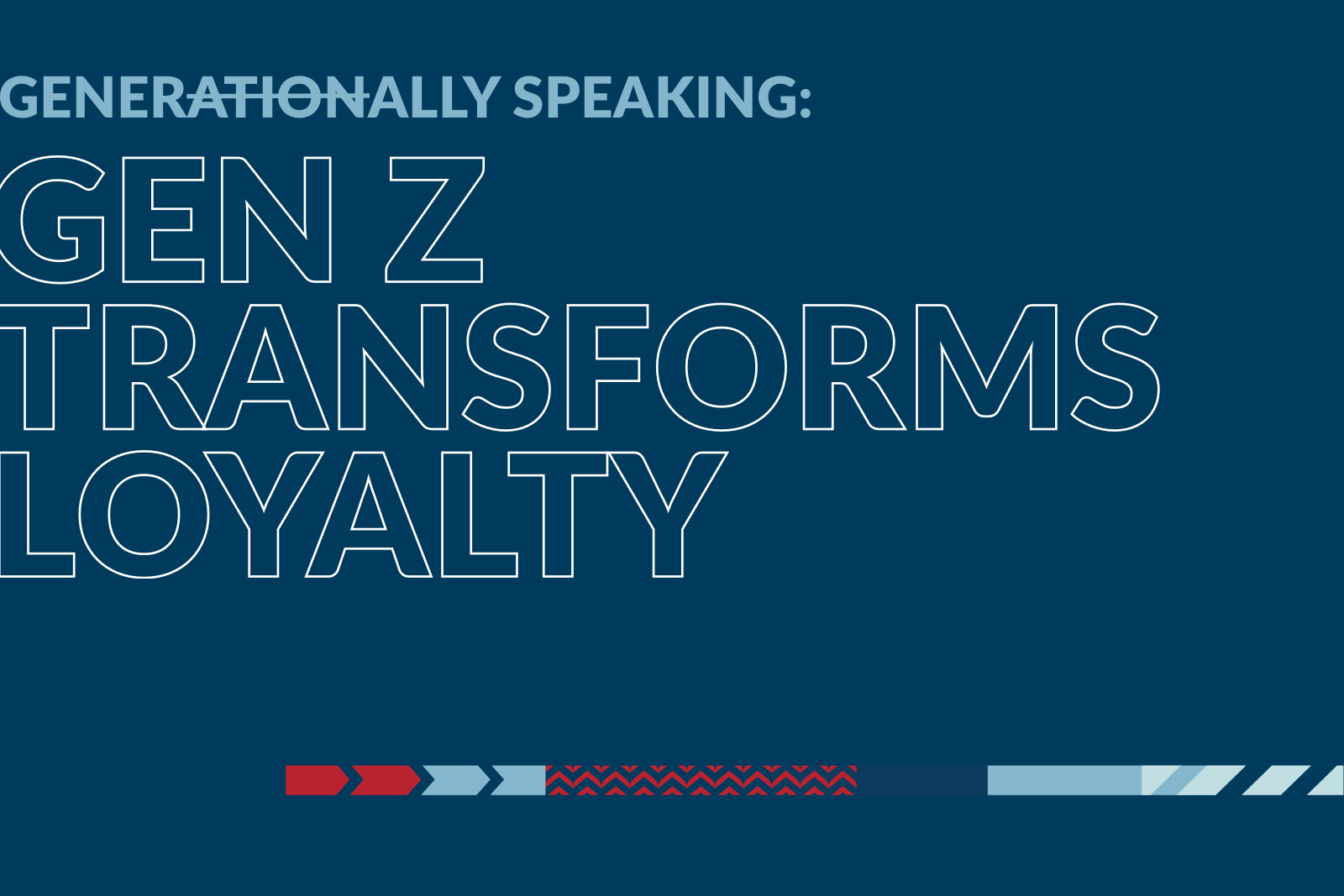Gen Z and the Attention Economy

As a summer intern at The Lacek Group, I’ve spent the past several weeks researching how Gen Z interacts with our favorite brands.
Several factors play a role in Gen Z’s unique attitude toward brands. We’re younger and less established in our careers, so we have less money to spend. As a result, we’re more selective about the brands we purchase from, but we’re dedicated to the brands we like. Finally, we embrace standing out as individuals. We value brands that feel like an authentic fit with our own personal brands.
For more on Gen Z and loyalty, read The Lacek Group’s white paper, “Generationally Speaking: Gen Z Transforms Loyalty.”
These observations got me thinking about the unique way Gen Z perceives brand value through marketing and the distinct currency of our attention—let’s call it the Gen Z “it” factor.
Grimace and the Gen Z it factor
Because we’ve been immersed in a world informed by social media our entire lives, Gen Z’s presence on social channels is unlike that of any previous generation. As digital natives, we implicitly grasp the power of trends and virality—and we wield significant influence over what gains traction in digital spaces.
Brand powerhouse McDonald’s recently experienced the impact of Gen Z’s influence when its campaign introducing a milkshake to celebrate Grimace’s 52nd birthday spawned a darkly funny TikTok trend. First introduced in 1971 as a milkshake-stealing villain, Grimace later morphed into a lovable, fuzzy blob who is Ronald McDonald’s bestie and just wants a steady stream of McDonald’s shakes. In the #grimace shake trend, the heritage character hunts down everyone who tries his namesake shake. People are seen wishing Grimace a happy birthday and then taking a drink of the limited-time purple-hued shake. Then the short TikTok videos cut to the person passed out somewhere, usually splattered with shake.
The Grimace trend illustrates the unpredictable and quirky nature of Gen Z’s online behavior, but how exactly are these viral moments created? And can—or should—brands cultivate them?
The Grimace shake spectacle is a notable example of the attention economy—a term coined to describe attention as a basic and finite economic resource. Gen Zers have a limited amount of attention to dedicate to brands and trends that catch our eye. Brands that want to turn us into loyalists need to compete for our attention.
Brands can’t pay for the kind of exposure McDonald’s received when its Grimace shake promo inspired a viral trend. These moments are elusive; they’re social media eruptions created and popularized for the sole purpose of entertainment without a set formula. When all the factors align, brands have high-visibility opportunities to leverage the deluge of attention to their benefit.
McDonald’s couldn’t anticipate the Grimace shake trend. Viral trends must develop organically on social media. However, the brand set the stage by drawing Gen Z’s attention through its celebrity meals (the latest being the duo celeb meals of Cardi B and Offset). The nostalgia of the Grimace shake built on that success.
And when Gen Z transformed the Grimace shake campaign into something unexpected and unique, McDonald’s didn’t interfere. Given the dark humor used in the trend, many brands may have attempted to squash it. Instead, McDonald’s recognized that the best strategy was to allow the trend to play itself out. The steep virality of the trend could be chalked up to luck, but McDonald’s laid the groundwork to position the brand as a good fit for Gen Z’s attention.
Does the it factor pay off?
To bring it back to economics, McDonald’s successfully differentiated its offering to capture the scarce resource of Gen Z’s attention. Then the brand allowed social media to organically create and deliver (comedic) value to its customers.
In the modern age of information and choice overload, cutting through the noise to catch our attention is increasingly important and consequential for brands. I almost think of the Gen Z It Factor as a reward that we bestow upon brands for effectively grabbing our attention.
But the million-dollar question is, is attention a revenue driver? Probably not by itself. Like social media trends, attention is immaterial and unpredictable–this is illustrated by the fact that it is nearly impossible to predict what goes viral. Once attracted, brands must sustain and direct Gen Z’s attention to drive sales. So how does a Gen Zer move from simply paying attention to a brand to becoming a paying—and perhaps even loyal—customer?
The attention funnel
The first phase of the attention funnel is the source—i.e., unique and authentic brand content that encourages us to see the brand as singular and authentic by extension. Because Gen Z identifies so deeply with individuality, we engage with brands we feel reflect that celebration of originality.
The second phase is ongoing attention to the brand, which is a tall order given the sheer amount of content Gen Z accesses. But sustained interaction with branded content and brand-driven trends can do the trick.
If a brand manages to sustain our attention, it can drive that attention to an app download or the creation of a rewards account. Once that happens, Gen Z can become loyal customers through the consistent delivery of in-app value such as rewards, discounts, and gamification.
Key takeaways
-
Gen Z’s attention is scarce—and its own form of currency.
-
Brands can lay the groundwork to grab Gen Z’s attention, but the organic, viral attention on social media may be the most valuable.
-
Brands can harness that organic, non-monetized social engagement into conversion and customer loyalty.
Katelyn Ambaruch was a summer 2023 strategy intern for The Lacek Group, a Minneapolis-based data-driven loyalty, experience, and customer engagement agency that has been delivering personalization at scale for its world-class clients for more than 30 years. The Lacek Group is an Ogilvy company.
